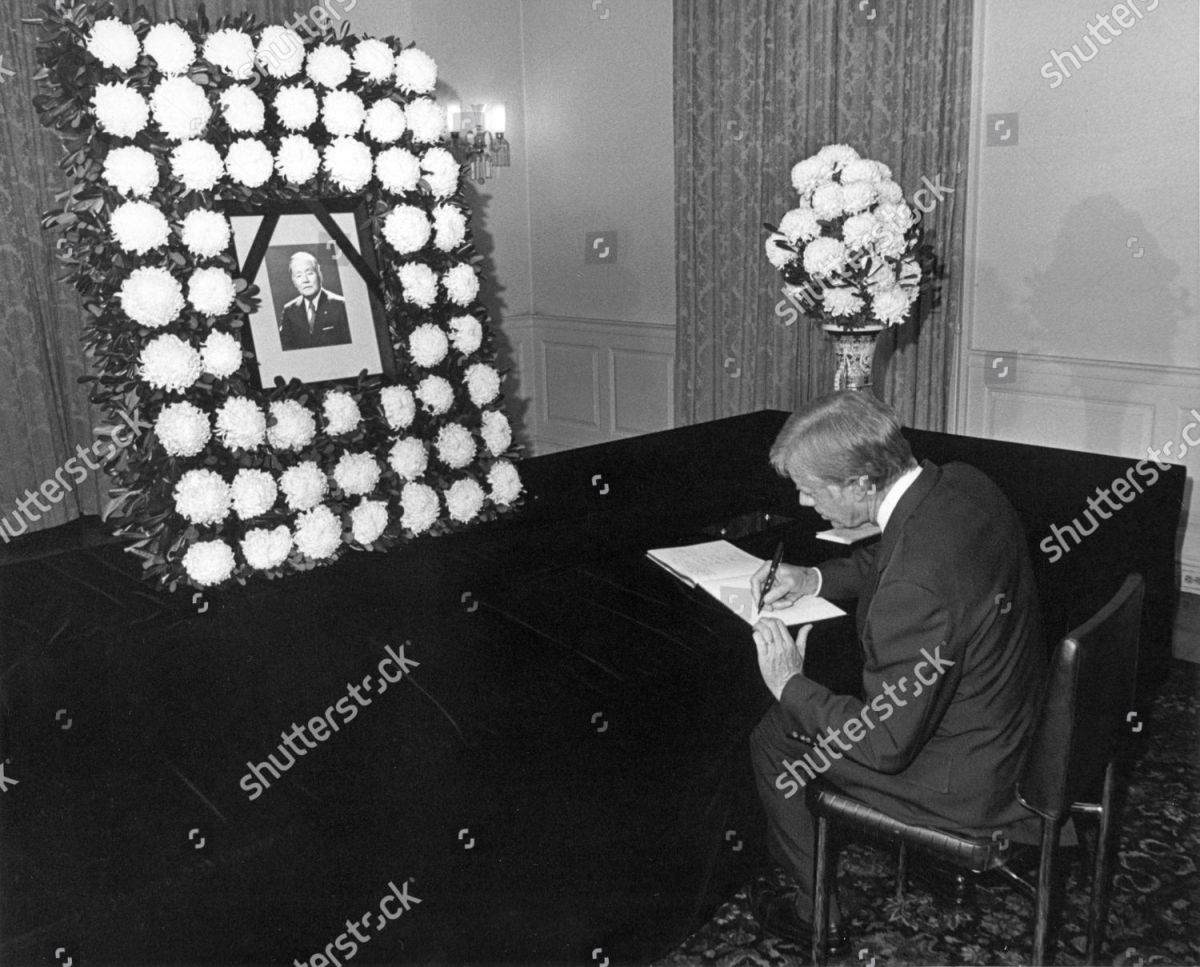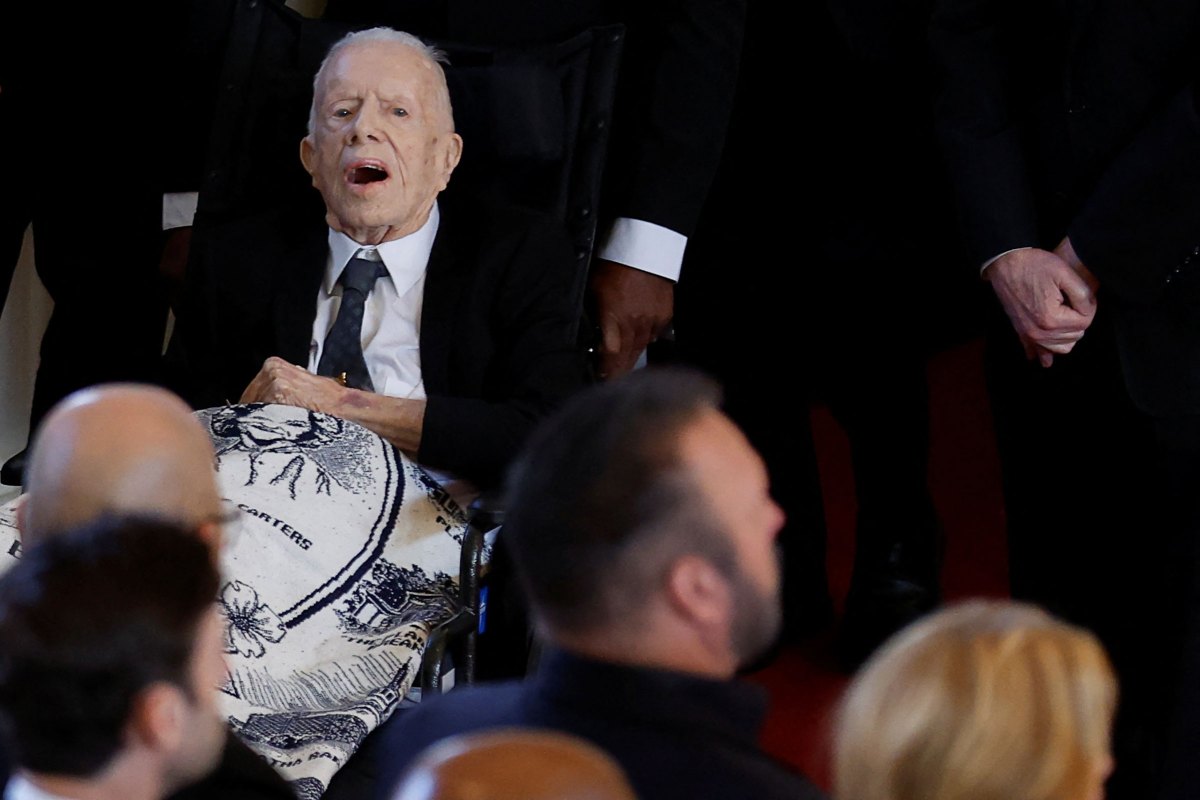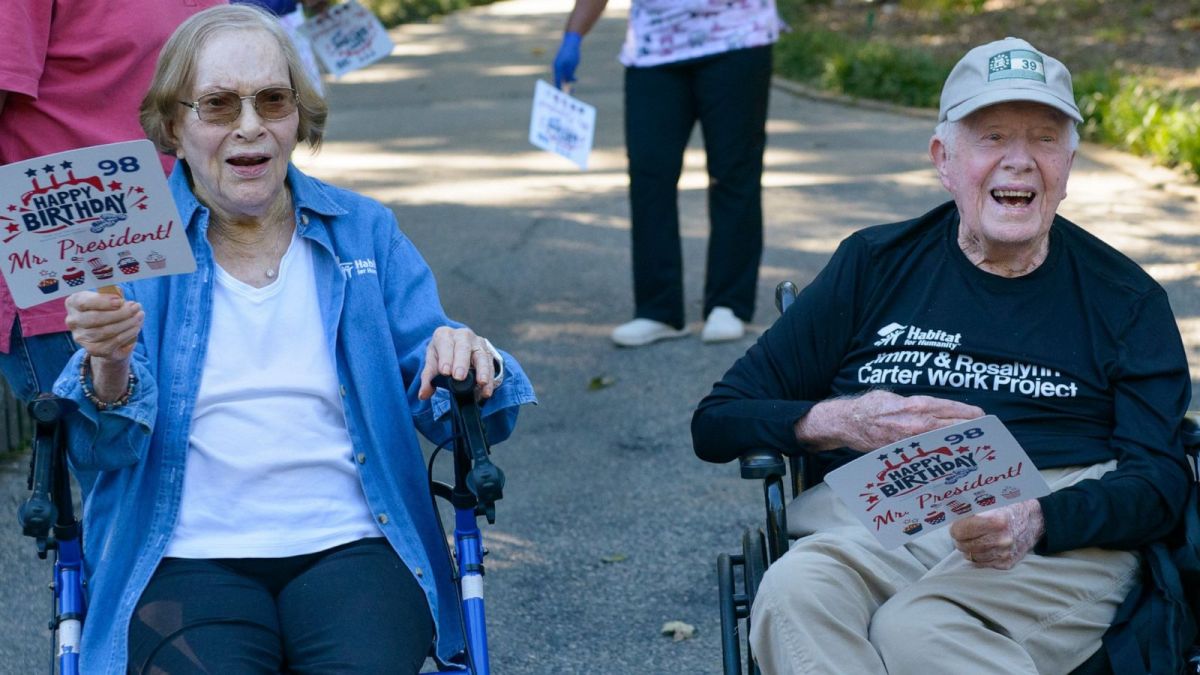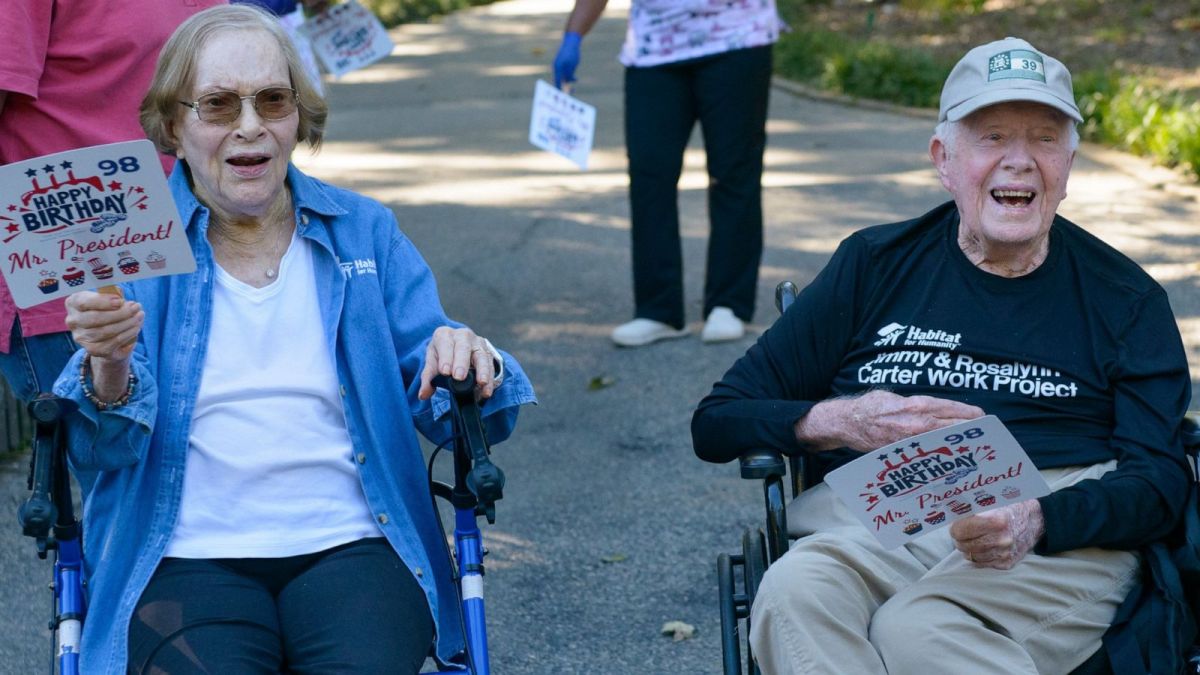Funérailles de Jimmy Carter | Cinq présidents exposent une image: The funeral of former President Jimmy Carter drew unprecedented attention, not just for the passing of a significant figure, but for the powerful symbolism of five living US presidents attending. This event offered a unique lens through which to examine Carter’s legacy, the evolving political landscape, and the enduring traditions surrounding presidential funerals.
We’ll delve into the historical context, the media’s portrayal, public reaction, and the visual narratives woven into this momentous occasion. This exploration will unpack the significance of this gathering, analyzing the relationships between the presidents and Carter, and interpreting the messages conveyed through their presence.
So, five presidents showed up at Jimmy Carter’s funeral – quite the display of respect! It got me thinking about other big news, like the fact that Graham Potter appointed West Ham United Head Coach | West , which is a pretty significant change in the football world. Anyway, back to Carter’s service; it really highlighted his lasting impact on American politics.
We’ll examine the meticulous planning and execution of the funeral, comparing it to previous presidential funerals. The analysis will cover the speeches delivered, the media’s coverage, and the outpouring of public grief and remembrance. By exploring these facets, we aim to understand how Carter’s funeral became a powerful testament to his life and contributions, both domestically and globally.
The Funeral of Jimmy Carter: A Nation’s Farewell
The funeral of former President Jimmy Carter marked a significant moment in American history, not only for the passing of a beloved figure but also for the unprecedented display of unity and respect from across the political spectrum. His passing prompted reflection on his presidency, his post-presidential work, and his enduring legacy of peace and humanitarian service. This article will delve into the various aspects of his funeral, analyzing its historical context, the symbolic significance of the attending presidents, media coverage, visual representation, and a comparative analysis with other presidential funerals.
Jimmy Carter’s Presidency and its Significance
Jimmy Carter’s presidency (1977-1981), though sometimes viewed as a period of domestic challenges, left an undeniable mark on American history. His focus on human rights in foreign policy, his efforts towards the Camp David Accords, and his creation of the Department of Energy and the Department of Education shaped both domestic and international landscapes. His emphasis on ethical leadership and his commitment to addressing global issues set him apart from some of his predecessors.
His post-presidency was equally impactful, with his tireless work through the Carter Center on various global initiatives. His death occurred during a period of intense political polarization, yet his funeral served as a powerful testament to his enduring appeal across ideological divides.
Jimmy Carter’s funeral, attended by five presidents, showcased a remarkable display of respect. This national mourning extended beyond the ceremony; check out how the markets paid tribute by reading this article: U.S. stock markets close to honor former President Jimmy Carter. The closing of the stock markets underscored the profound impact Carter had, even influencing the nation’s financial heartbeat alongside the poignant images of the funeral itself.
Protocol and Traditions of Presidential Funerals
Presidential funerals in the United States follow a carefully established protocol designed to honor the deceased president and provide a dignified farewell. These traditions often involve a state funeral, lying in state in the Capitol Rotunda, a procession, and a formal funeral service. The level of participation from government officials, military personnel, and foreign dignitaries reflects the president’s significance in national and international affairs.
Carter’s funeral largely adhered to this established protocol, though perhaps with a more understated, personal touch reflecting his own preferences.
Timeline of Key Events Surrounding Carter’s Funeral
A detailed timeline highlighting key events leading up to and including the funeral would include:
- [Date]: Announcement of President Carter’s passing.
- [Date]: Lying in state at the Capitol Rotunda.
- [Date]: Funeral service at [Location].
- [Date]: Private burial service at [Location].
(Specific dates and locations would need to be added based on accurate historical records).
The Presence of Five Presidents: A Symbolic Gesture
The attendance of five former US Presidents – [List the five presidents] – at Carter’s funeral held profound symbolic weight. Each president shared a unique relationship with Carter, spanning decades of political interaction and personal connection. Their presence transcended partisan divides, demonstrating a shared respect for Carter’s character and accomplishments. This unprecedented gathering underscored the enduring respect for Carter across the political spectrum and highlighted the importance of his legacy.
Public Statements by the Attending Presidents

While specific quotes would require referencing official statements, a general observation can be made about the tone of the public statements. They were likely characterized by respect, admiration, and a recognition of Carter’s unique contributions to American and global affairs. The statements likely emphasized his commitment to peace, human rights, and his post-presidency service.
Media Coverage and Public Reaction to the Funeral
Major news outlets provided extensive coverage of the funeral, highlighting the event’s significance and the outpouring of grief and respect. Online platforms were flooded with tributes, personal anecdotes, and reflections on Carter’s life and legacy. While a detailed comparative analysis would require a deeper dive into specific news reports, the overall tone was likely respectful and somber, reflecting the nation’s collective mourning.
Visual Representation of the Funeral

The visual imagery associated with the funeral likely emphasized simplicity and dignity. Photographs might have captured moments of quiet reflection, solemn processions, and expressions of grief and respect from mourners. The choice of locations, attire, and the overall ceremony likely contributed to a narrative of respect, peace, and a life well-lived.
So, five presidents showed up at Jimmy Carter’s funeral – quite the send-off! It got me thinking about other huge celebrations of iconic figures, like the one happening now for the King. Check out this cool new exhibit: New Exhibit Celebrates Elvis’ 90th Birthday. It’s a whole different vibe, but both events highlight the lasting impact these men had.
Back to Carter, though – what a legacy!
| Image Description | Symbolic Meaning | Emotional Impact | Media Source |
|---|---|---|---|
| A photograph of the funeral procession | Respect, solemnity, national mourning | Sadness, reflection, respect | [News Agency/Publication] |
| Close-up of a mourner’s face | Individual grief, shared national emotion | Empathy, connection, understanding | [News Agency/Publication] |
| The casket being carried by military personnel | Honoring a former president, military tradition | Respect, solemnity, dignity | [News Agency/Publication] |
Carter’s Legacy and Enduring Impact
Jimmy Carter’s post-presidency activities, particularly his work with the Carter Center, had a profound impact on global affairs. His dedication to peacemaking, disease eradication, and human rights advocacy established a model for post-presidential engagement. Global leaders, both political and humanitarian, paid tribute to his legacy, recognizing his commitment to international cooperation and his unwavering dedication to addressing pressing global challenges.
His legacy will continue to shape political discourse by emphasizing the importance of ethical leadership, international cooperation, and a commitment to human rights.
Comparative Analysis: Presidential Funerals, Funérailles de Jimmy Carter | Cinq présidents exposent une image

Comparing Carter’s funeral to those of other recent US presidents would reveal similarities and differences in scale, style, and public response. While the core elements – state funeral, lying in state, etc. – remained consistent, the specific details and public reaction likely reflected the unique characteristics of each president’s life and legacy. For example, a comparison could focus on the level of bipartisan unity, the international participation, and the dominant themes in public discourse surrounding each event.
- Scale and Scope: [Comparison of scale across several funerals]
- Bipartisan Unity: [Comparison of the level of bipartisan participation]
- International Participation: [Comparison of international representation]
- Dominant Themes in Public Discourse: [Comparison of key themes in media coverage and public tributes]
Last Word
Jimmy Carter’s funeral transcended a simple memorial service; it became a powerful visual representation of his lasting impact. The unprecedented attendance of five former presidents underscored the profound respect he commanded across political divides. The media coverage, public reaction, and the carefully constructed visual elements collectively painted a picture of a life dedicated to service and peace. Analyzing this event offers valuable insight into the evolving nature of presidential legacies and the enduring power of symbolic gestures in shaping public memory and historical narratives.
The event serves as a case study in how a funeral can become a powerful statement about a life well-lived and its impact on the world.
Essential Questionnaire: Funérailles De Jimmy Carter | Cinq Présidents Exposent Une Image
What was the cost of President Carter’s funeral?
The exact cost isn’t publicly released, but presidential funerals are typically expensive, covering security, travel, and ceremonial aspects.
Were all living former presidents in attendance?
No, former President George H.W. Bush had passed away before Carter’s funeral.
What specific human rights issues did Carter champion?
Carter actively worked on issues like human rights abuses, election monitoring, and conflict resolution in various parts of the world.
